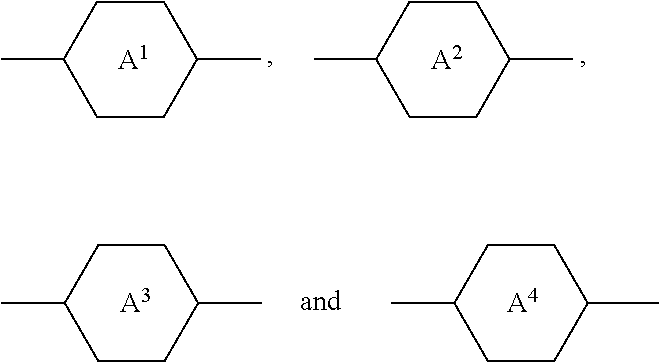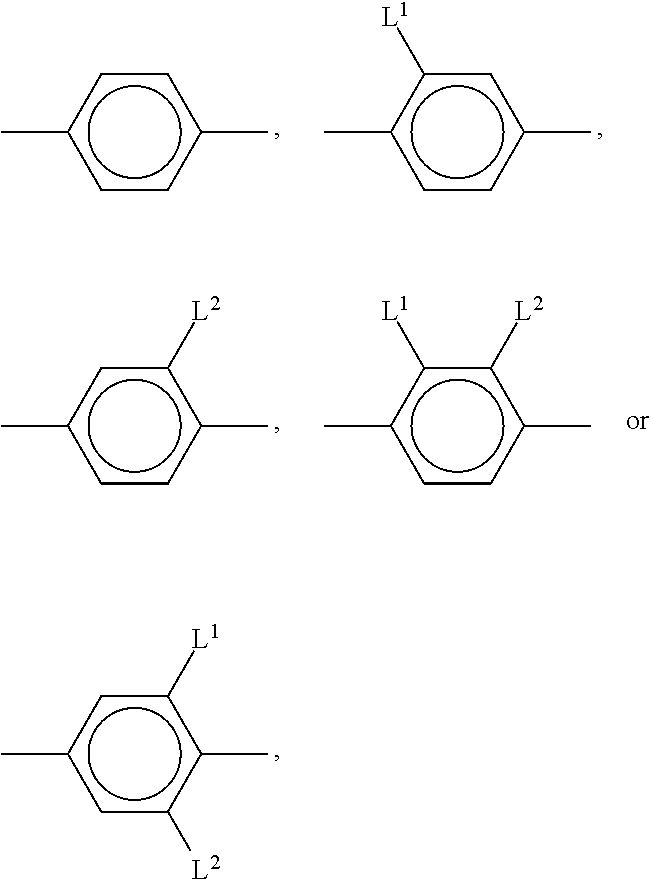Liquid-crystal display
a liquid crystal display and display technology, applied in the field of liquid crystal display, can solve the problems of reducing the transparency of light, the strong viewing angle dependence of contrast, and the lengthening of response times
- Summary
- Abstract
- Description
- Claims
- Application Information
AI Technical Summary
Benefits of technology
Problems solved by technology
Method used
Image
Examples
example 1
[0337]The following nematic LC host mixture H1 is formulated:
CY-3-O215.00%Cl.p.+80.5CY-5-O4 8.00%Δn0.0909CCY-3-O3 9.00%Δε−3.4CCY-4-O2 5.50%ε∥3.7CPY-2-O2 9.00%γ1138CPY-3-O2 9.00%CCY-3-1 7.00%CCH-34 9.00%CCH-25 5.00%CCH-2311.00%CCH-301 5.00%CCH-31 6.00%PPGU-3-F 1.00%
[0338]The mixture contains the compound PPGU-3-F of formula I selected from the first sub-group (dielectrically positive) and wherein p is 1.
example 2
[0339]The following nematic LC host mixture H2 is formulated:
CY-3-O215.00%Cl.p.+80.5CY-3-O410.00%Δn0.0912CCY-3-O2 6.50%Δε−3.3CCY-3-O3 9.00%ε∥4.2CCY-4-O2 8.00%γ1144CPY-2-O2 8.50%CPY-3-O2 6.00%CCH-34 9.00%CCH-25 5.00%CCH-2311.00%CCH-3013.00%CCP-31 6.00%PGU-3-F 3.00%
[0340]The mixture contains the compound PGU-3-F of formula I selected from the first sub-group (dielectrically positive) and wherein p is 0.
example 3
[0341]The following nematic LC host mixture H3 is formulated:
CY-3-O215.00%Cl.p.+80.0CY-3-O4 5.50%Δn0.0919CCY-3-O3 9.00%Δε−3.3CCY-4-O2 7.00%ε∥3.5CPY-2-O2 8.50%γ1125CPY-3-O2 9.00%CCY-3-1 3.00%CCH-34 9.00%CCH-25 5.00%CCH-2311.00%CCH-301 9.00%CCP-31 6.00%PGP-2-2V 3.00%
[0342]The mixture contains compound PGP-2-2V of formula I selected from the second sub-group (dielectrically neutral or negative) and wherein p is 0.
PUM
| Property | Measurement | Unit |
|---|---|---|
| Wavelength | aaaaa | aaaaa |
| Wavelength | aaaaa | aaaaa |
| Fraction | aaaaa | aaaaa |
Abstract
Description
Claims
Application Information
 Login to View More
Login to View More - R&D
- Intellectual Property
- Life Sciences
- Materials
- Tech Scout
- Unparalleled Data Quality
- Higher Quality Content
- 60% Fewer Hallucinations
Browse by: Latest US Patents, China's latest patents, Technical Efficacy Thesaurus, Application Domain, Technology Topic, Popular Technical Reports.
© 2025 PatSnap. All rights reserved.Legal|Privacy policy|Modern Slavery Act Transparency Statement|Sitemap|About US| Contact US: help@patsnap.com



